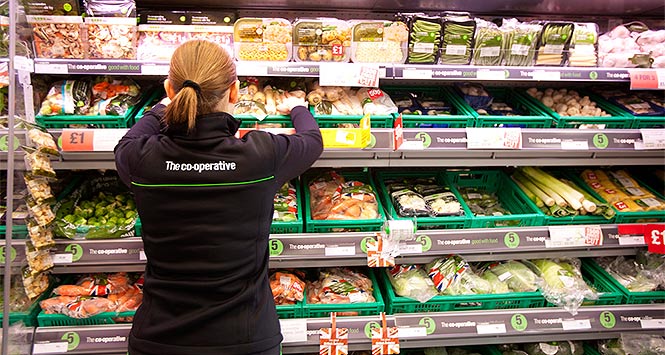The announcement last month that Costcutter and P&H were joining forces to launch a new group with £5bn buying power sent shockwaves through the industry and provided convenience with a powerful new entity, but what does the future hold?
by Kevin Scott
Rumours had persisted for years that Costcutter was to end its distribution agreement with Nisa. When the Yorkshire company announced last month that it was to join forces with Mace wholesaler P&H to launch The Buyco, an alliance with £5bn buying power, the rumour finally became fact. The Buyco will serve Costcutter stores, along with P&H’s existing independent retailers, which includes 800 Mace stores. In total, this pushes the Costcutter estate to 2,500 stores – putting it behind only Booker’s Premier group. With Costcutter signing an eight year distribution agreement with P&H, the latter will concentrate on its wholesale business, allowing Costcutter to concentrate on retail. P&H’s retail business transfers to Costcutter Supermarkets Group on 7th April while the supply deal will begin in 2014 when Costcutter’s deal with Nisa expires. The cost to Nisa is thought to be in the region of £500m annually.
“This is probably the biggest shake-up the convenience sector has ever seen,” says Costcutter CEO Darcy Willson-Rymer. “We have been single-mindedly focussed on creating maximum value for our members and it became wholly apparent that without access to the proportionate benefits of our own buying power this could not happen. Through the creation of The Buyco, we will have unrivalled purchasing power within the sector.”
It is with this purchasing power that Willson-Rymer plans to double the size of Costcutter’s store numbers. An ambitious plan, but for a man who formerly ran Starbucks in the UK, opening new outlets is second nature: “We can double the number of stores through a combination of non-affiliated retailers joining Costcutter and through potential acquisitions in the future.”
Chances are we will have to wait a while to see if Willson-Rymer’s prediction comes good. With the supply deal not beginning until next June, there won’t be many retailers out there willing to step into the unknown.
Consolidation
Further consolidation in the industry seems inevitable, but that in turn puts a further squeeze on unaffiliated retailers who can struggle to compete with the pricing of symbol stores – never mind multiples. The role of the multiples in convenience has altered sharply in the last couple of years and thanks mainly to the efforts of Tesco and Sainsbury’s convenience is the fastest-growing area of the grocery industry. For symbol groups to compete, they must grow.
Willson-Rymer himself believes further consolidation is likely. He says: “I can see this as the start of a consolidation period for the symbol space. With the way supermarkets are moving into convenience what we will see are groups looking for better marketing support.”
John Drummond, Chief Executive of the SGF agrees that the deal does open the mind, if not the door to further consolidation. “That’s one of the effects of an arrangement like this,” he says. “It does make you think about what other combinations or mergers could happen in the future.”
What this does illustrate is that there are firms willing to invest vast sums in the sector – and that means the sector has a strong future. Drummond adds: “With increased buying power there will be increased competition. It demonstrates that there is an opportunity to combat the supermarkets. It focusses the mind not on the competition between symbol groups but on the independent sector’s competition against the real opposition – the multiples.”
Purchasing Power
By using the term “unprecedented purchasing power” it would seem that The Buyco team is ready to roll its sleeves up and begin to work on securing the better prices that will allow its retailers to take on the mults. Suppliers are likely in for a tough time, but ultimately will retailers see the benefits?
Derek Ritchie, who runs Costcutter stores in Ellon and Mintlaw, says his initial apprehensions about the deal were quickly replaced by optimism. “When I first heard I admit to being a bit underwhelmed, but being there in Birmingham and hearing the full story I was very impressed. It looks good for Costcutter retailers.”
Ultimately, Derek believes that it will be his customers that benefit, which will benefit him in turn. “It’s a better deal for customers, but it’s a better deal for Costcutter to. I think there’s too much reliance on Nisa at the moment and we have to remember that Nisa are competition.”
With P&H having 14 depots in Scotland, including Inverness and Dunfermline, Derek is confident that the company has the logistics to cope, although he admits there will likely be some teething problems next year. “When the switch comes there will doubtlessly be some short term pain but that’s just something we’re going to have to contend with. Long-term I think it’s the best move we could make.”
Over in Inverness, Gordon and Debbie Mair, who have been with Costcutter since their store opened in 2011 are reserving judgment until they know more about the logistics of the changeover and the subsequent service from P&H.
Gordon says: “When you speak to Costcutter it appears wonderful, but I’m reserving judgement until I know more details. It’s certainly intriguing, but there are obviously a lot of questions that retailers are going to have, and we’ll be asking them in due course.”
Costcutter Aviemore is a store with an exceptional SLR Award-winning fresh offering and Gordon says he has no complaints with his delivery service from Nisa through DHL. “P&H have a lot to live up to in terms of packing deliveries and getting them out to us in pallets. We’ve no issues at the moment, so obviously if that’s going to change it makes you a little concerned. In theory it sound great though, if there is going to be better buying power than you have to think better prices and products will be available.”
Only time will tell just how well the new supply deal works and how this will influence retailers – will Costcutter really double its estate? Will The Buyco prove attractive to other symbol groups? Will the increased buying power see more shoppers use their local store? The last word, for now, goes to Willson-Rymer. “Under the Costcutter Supermarkets Group we are now a multi-focussed single group. It’s important that each fascia group remains different – we’ll be looking at why people shop there and providing the best offer we can for each of them.”
The Buyco’s purchasing power
Martyn Ward, CEO of The Buyco and current Managing Director, Commercial and Sales at Palmer & Harvey, says that the new company’s sole reason for being is to create “value through volume”.
He says: “We will be working closely with suppliers, both those already working with Palmer & Harvey and new suppliers that we will be bringing on board to meet the needs of Costcutter Supermarkets Group members and all of P&H’s existing independent retailers, to ensure we are providing not simply the largest range but the highest value range possible. This brings greater value for everyone, including consumers who will ultimately benefit the most from a strong independent convenience sector.”
As part of the offering, Costcutter will be introducing a more comprehensive chilled and fresh proposition and a new three tier own-label range.







